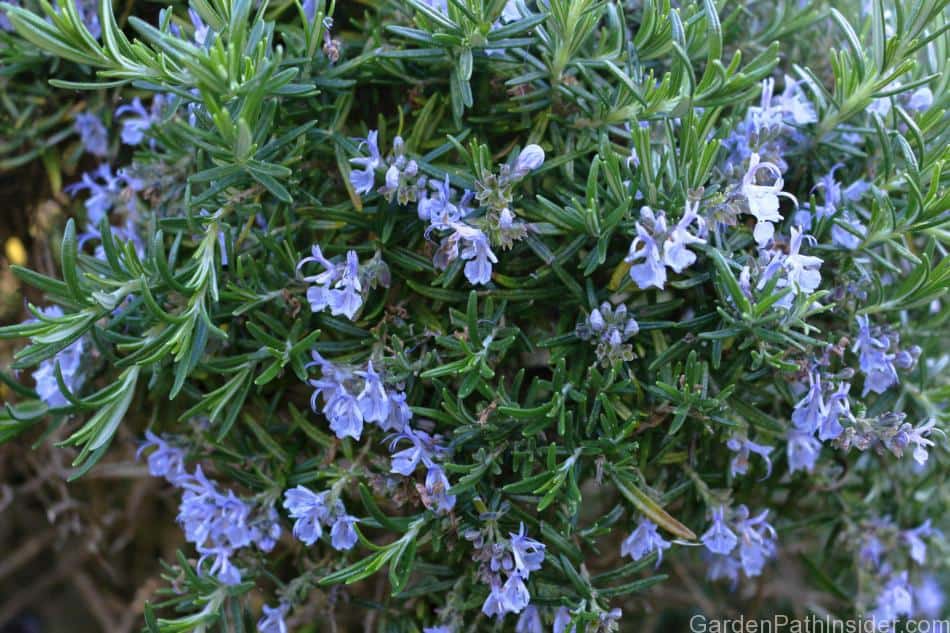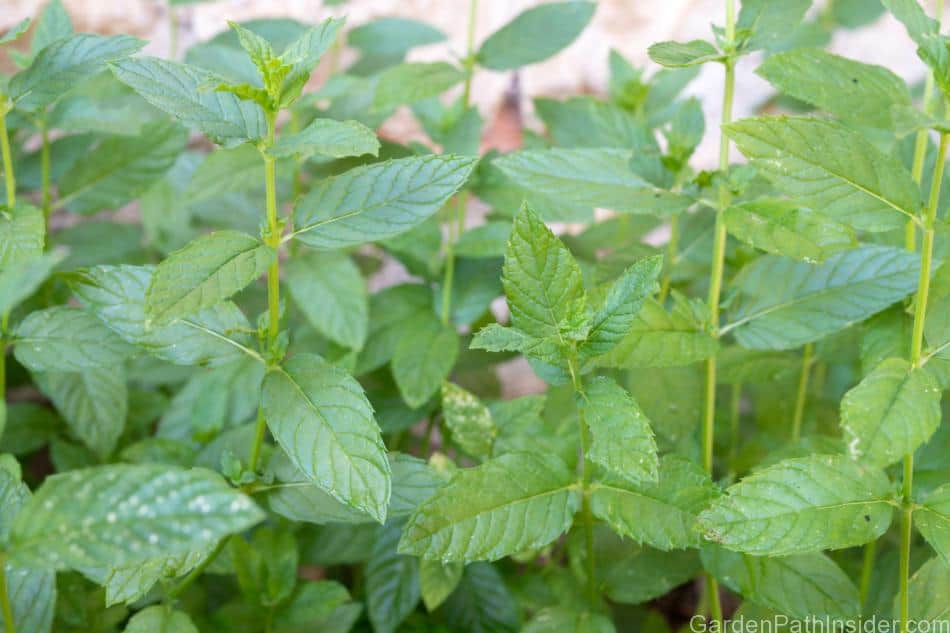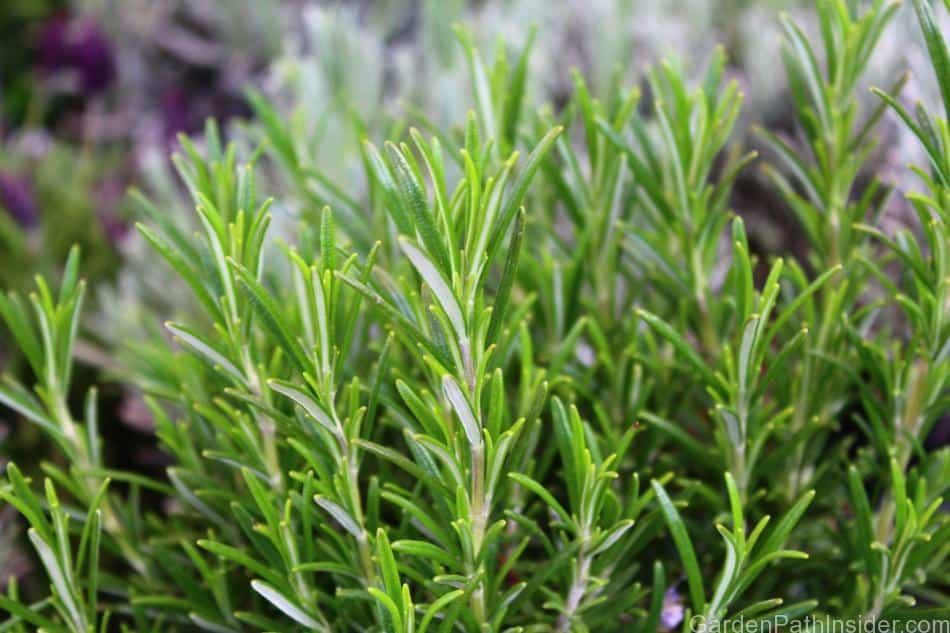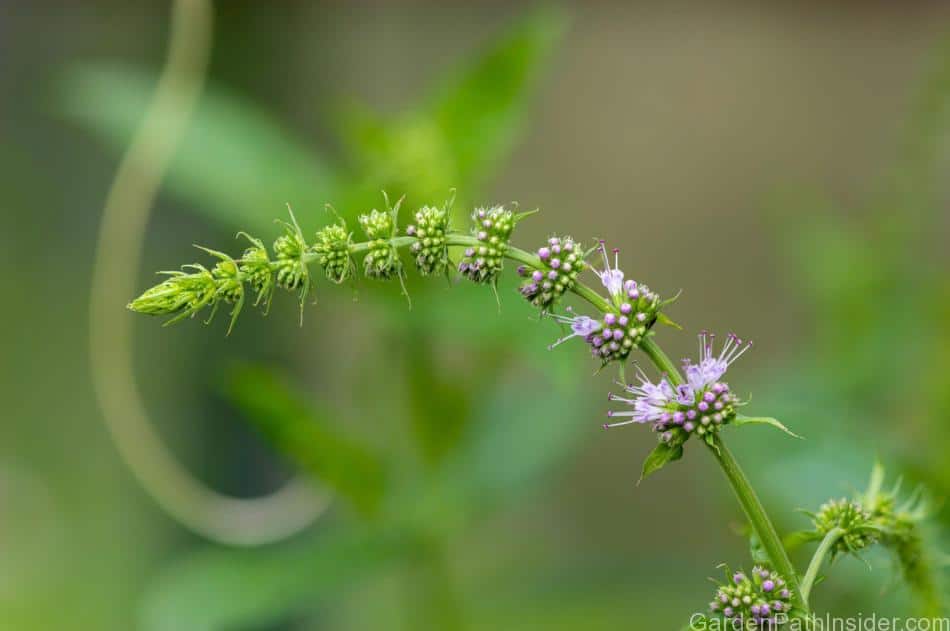
Mint and rosemary are flavorful aromatic herbs that are a wonderful addition to beverages and treats. Together the sweet notes of mint are a great balance to the savory flavor of rosemary. These herbs are easy to grow in any space you have available.
Mint and rosemary should not be planted together in the same growing container; as rosemary requires drier sandy soil, and mint requires moist fertile soil. Mint is also an invasive species, quickly overtaking garden beds. Mint and rosemary are great companion plants to grow side by side in separate containers, as mint repels pest that may harm rosemary.
Rosemary and mint grow great as companion plants side by side in their own growing spaces. Though each plant species has different soil and water requirements, both have the SAME sunlight and temperature needs, making these two plants great for any container or backyard garden.
Overview of Mint
Mint is an herbaceous perennial that thrives in most gardens and growing conditions. There are many varieties of mint with flavors and fragrances that range from traditional mint and peppermint to fun flavors like chocolate mint and pineapple mint. An invasive species, mint will overtake its growing area and spread through a garden in a single season if not properly contained.
The leaves of the mint plant are removed from the plant and used in beverages, meals, and treats like; salads, smoothies, chocolates, ice creams, and even meat dishes as mint jelly.
The leaves are edible as soon as they develop, though it is best to wait for the plant roots to establish before harvesting too many leaves.
Overview of Rosemary
Rosemary is a tender perennial that can live for decades, though it is not hardy enough to withstand the winters of cold climates without wintering indoors or a greenhouse. Rosemary’s unique fragrance and flavor is a wonderful addition to savory meals and treats, like soups, baked chicken, cheeses, and even ice cream.
Harvesting rosemary is as simple as cutting off sprigs of new green growth whenever the fresh herb is needed in the kitchen. The new green growth is soft and tender and is at the peak of flavor and fragrance. As the rosemary matures the stems turn from soft and green to thick and woody. Pruning rosemary regularly during the season will encourage the shrub to continue to develop new growth.
Rosemary varieties grow in either an erect upright shrub or a creeping variety that grows low to the ground more closely resembling ground cover.
Container & Growing Space Requirements
Rosemary and mint will thrive in their own separate containers or garden beds. A single mint plant can spread quickly in any growing space it’s planted and overtake any garden bed in a single season. A single rosemary plant will grow into a large bushy shrub if not trimmed or pruned.
Mint can grow in any size container or pot. The larger the growing space, the more mint will grow and be available for harvest. When planting mint in a garden bed, use a raised bed if possible. If you do not have access to a raised bed, you can use garden bed barriers to contain the mint spread.
Garden bed barriers are dividers that are buried below the soil in a perimeter around your mint plants. The barriers will keep the mint roots from spreading outside the perimeter and invasively taking over your garden. Mint roots do not grow deep, the barrier will only have to go down in the ground about 8 inches (20cm).

Rosemary can also thrive in any size container. The height of the rosemary plant will be determined by the size of the growing space. If rosemary is planted in a small pot, then it will stay small. If rosemary is planted in the ground it can grow to several feet tall when properly pruned and maintained.
The key for growing mint and rosemary in containers is adequate drainage of the container. Clay pots usually have a large drainage hole in the bottom of the pot. Plastic containers may lack adequate drainage ports, though you can always add your own holes to the bottom of the container if needed.
Once you have holes in the bottom of your pots, add a few small rocks or bits of broken clay pots to keep the soil or roots from blocking the drainage ports. Adding a clay dish under the pot will keep the excess water contained.
If the plants are in small movable pots, you can always bring your plant to the sink and water it thoroughly letting the excess water drain out in the sink.
Soil Needs for Mint and Rosemary
Rosemary is native to the Mediterranean and thrives in sandy soil that is well-draining. If you are planting rosemary in a container or pot, use a sterile potting mix as backyard topsoil may contain bacteria or insects that could damage the rosemary roots.
Rosemary grown in a garden bed can be planted in sandy well-draining topsoil. For outdoor plants, I fertilize once a season with an organic fertilizer. Always follow the directions on fertilizers, as this step can negatively affect the garden if too much is used.
Mint requires moist well-draining soil that is fertile to slightly alkaline. If you are planting mint in pots, it is still recommended to use sterile soil. Mint can thrive in rocky backyard soil if that’s all you have available for potting. However, the insects or bacteria that could be in topsoil may not harm the mint plants, though it may harm other plants in your container garden.
Mint grown outside can thrive in most soil conditions as mint is an invasive species. If mint takes over your garden bed, it will come back every year until it is fully pulled up and eradicated by hand.
Water Needs for Mint and Rosemary

Rosemary Water Needs
Rosemary is drought tolerant and does well only watered once or twice a week. In summer or warmer climates, check daily and water as needed.
Rosemary potted in containers are often overwatered. This is because the top of the soil may feel dry when there is still plenty of water deeper down in the root ball. Before watering rosemary look for the signs of dehydration.
Signs of dehydration in rosemary. When rosemary needs water, the tops on the branches will start drooping over sideways and the soil will begin to pull away from the sides of the pot. When you see these signs, it is time to water your rosemary plant.
Watering potted rosemary. When it is time to water potted rosemary, you can bring the plant to a sink and water the pot thoroughly until water is draining out the bottom of the plant. Leave the pot in the sink until water stops draining from the pot, then return the plant to its sunny growing space.
Watering in-ground rosemary. Rosemary planted inground is still susceptible to overwatering if the garden bed does not drain excess water well. To see if your plant needs water look to see if the new growth branches are drooping over. The established branches of rosemary will grow thick and woody and will not provide a good sign of the plant’s water levels.
If you have a back-yard garden it may be worthwhile to invest in a soil moister sensing meter or a T-handle soil sampler probe. Both tools will give you an accurate reading of your gardens moister levels and could save you from overwatering some of the more fragile plants in the garden.
Mint Water Needs
Mint is a thirsty plant and requires moist well-draining soil. Mint also spreads and grows quickly requiring water daily, and twice daily in summer or hotter climates.
Watering potted mint. Mint requires moist soil to thrive. However, mint is still susceptible to overwatering. Keep mint’s soil moist to the touch. Do not let water puddle or sit in the potted mint plant or the roots will drown, rot, and die.
To test mints soil moisture levels just press your fingertips gently in the soil, being careful not to damage the root system. If the soil is dry or the mint plants are drooping, then water the mint thoroughly until water drains out of the bottom of the pot. If the mint is in a small pot, then watering in the sink is a great option to avoid any mess.
Mint grown outside should be watered in the early morning or in the later evening when the sun has started to go down. Watering at these times will keep the sun and heat from evaporating the water intended for the mint plants.
Light Needs for Mint and Rosemary
Both mint and rosemary require full sun of 6 to 8 hours per day to fully thrive, though both plants will still grow satisfactory with less than full sun.

Mint is a perennial and will die off during the cold months of the season and return after the final frost. Rosemary grows as a bushy hedge and will go dormant in the cold months of warmer climates. Rosemary will also go dormant in the cold months if its grown indoors. Without full sun, rosemary will maintain its current size through the dormant period. Rosemary grown outside in cold climates will likely die and must be replanted each year.
Harvest Time for Mint and Rosemary
Mint leaves can be eaten at any age of the plant, though it is best to wait for the mint to establish its roots and grow a few inches tall before harvesting leaves.
To harvest mint, simply cut a leaf off the stem and wash before eating. Pro Tip: Use a pair of sharp scissors when harvesting mint, tearing the leaves off the plant may damage or break the stem of the plant.
Rosemary can be harvested at any time once the plant has established its roots. To harvest rosemary, use a sharp pair of scissors to cut a sprig of rosemary off the plant at a node.
Once rosemary is established it is recommended to trim the plant throughout the growing season to encourage new growth on the branches.
The best parts of rosemary to harvest are sprigs of new growth, as the older growth on the plant will get thick and woody stems as the season progresses.
If you live in a warm climate the rosemary will survive through the winter with little effort needed to winterize the plant. In the pacific northwest, many backyard gardens have large healthy rosemary plants, as the winters are seldom cold enough to harm the plant. Even in this climate, there will be dead growth at the end of the season that needs to be cut back. Frequent removal of dead branches will benefit the plant’s ability to sprout new growth in the trimmed back parts of the plant.
Summary Chart for Mint and Rosemary
| Plant | Soil type | Water needs | Light needs | Bloom time | Harvest time |
| Mint | Loose well-draining fertile soil | Keep the soil slightly damp to moist. Water as needed | Full sun | Spring/Summer | Mint leaves are edible at any time, though best practice Is to wait until the plant gets at least 6 inches tall (15cm) |
| Rosemary | Drier sandy soil | Water the soil thoroughly once per week. Look for drooping branches and dry soil pulling away from the sides of the pot before you water. | Full sun | Depending on the variety, rosemary blooms can be spring/summer or fall/winter. | Rosemary can be harvested all season, as new growth develops on the plant. Frequent pruning of rosemary will allow the plant to continually produce new growth during the season. |
Cover image: Rosemary in bloom_© visharo/123rf.com
